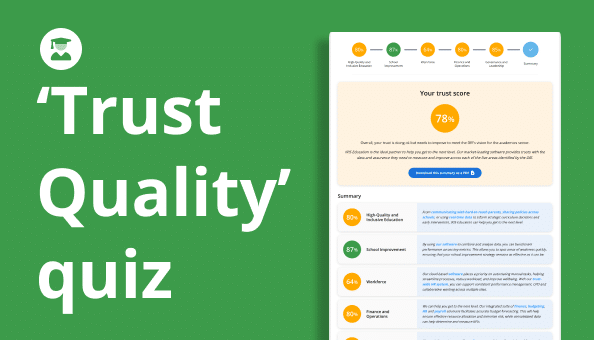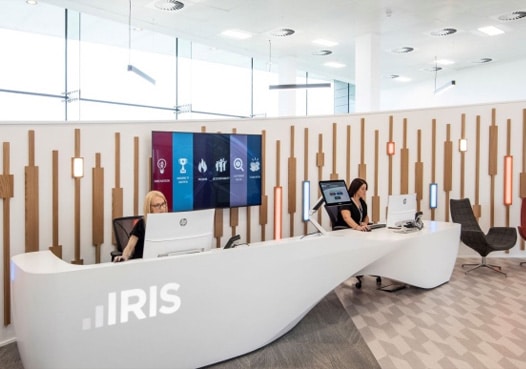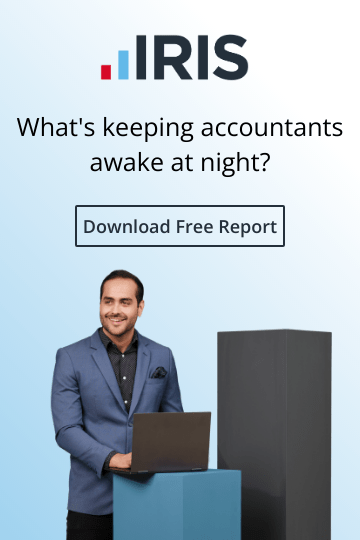BLOGS
IFRS 16 is finally here: are U.K. public sector entities ready?

The moment many public sector finance teams have been bracing for is finally here. From today (1st April 2022), IFRS 16 officially comes into force – now is the time for public sector bodies to kick-start the compliance process.
Published by the International Accounting Standards Board (IASB) in 2019, IFRS 16 ‘Leases’ sets out the principles for the recognition, measurement, presentation, and disclosure of leases. It replaces IAS 17 and related IFRIC and SIC interpretations.
The introduction of the standard is part of a wider effort by the IASB to overhaul lease accounting and ensure balance sheets better reflect the contractual liabilities of a business. Giving investors, lenders, and other stakeholders a more accurate view of an entity's financial position.
The new standard, requires lessees to account for their leases under a single accounting treatment, bringing virtually all leases ‘on balance sheet.’ IFRS 16 will require a lessee to recognise a right-of-use asset and a lease liability for leases with a term of more than 12 months - unless the underlying asset is of low value.
Many public sector bodies rely on leasing as an alternative form of asset financing, so the impact of IFRS 16 will be significant and far-reaching, not just from a financial reporting perspective, but also from a business process, controls, and systems standpoint.
FReM interpretations and adaptations
The application of IFRS 16 differs slightly for the public sector as the Government Financial Reporting Manual (FReM) has adapted and interpreted IFRS 16 in several ways – full details can be found in the HM Treasury’s IFRS 16 Application guidance.
Some of the main differences include:
- FReM have boarded the definition of a lease to include two further types of arrangement.
- Intra-UK government agreements that are not legally enforceable
- Nil consideration agreements
- The treatment of peppercorn leases
- The application of exemptions.
- 'FReM mandates the recognition and measurement exemption for short-term leases' ('IFRS 16 Leases - GOV.UK')
- Disclosures are still required for short-term leases - if material
- The application of discount rates
- Where the rate to be applied cannot be determined from the lease itself, as a Public Sector lessee, you are required to use the HM Treasury discount rate unless you can demonstrate that another discount rate would more accurately reflect your incremental borrowing rate.
Note: IFRS 16 provides an exemption for low-value leases. However, FReM has not adapted this exemption for the public sector, and this exemption remains optional.
What are the challenges facing public sector organisations?
While the route to compliance may be unfamiliar to public sector organisations, it is a journey that has been successfully navigated by many businesses, as IFRS 16 was introduced into the private sector in 2019. This has supplied valuable insights into the main challenges and obstacles to expect during implementations.
With 200+ lease accounting implementations under our belt, IRIS is also keen to share the main insights and lessons learned from these projects so that public sector organisations can avoid the perils of IFRS 16.
1. Adopting the standard is complex so begin early
For many private sector entities, the implementation of IFRS 16 took longer than initially anticipated. The transition process was more complex than expected, and the level of process and system transformation required was vastly underestimated.
We therefore strongly recommend that public sector bodies start the process as early as possible, analyse the standard, set up proper procedures, and allow sufficient time to address the obstacles that will inevitably arise.
2. Locating leases is harder than expected
When implementing IFRS 16, many companies underestimated the resource and time that would be needed to discover just what leased assets they were liable for.
For many entities, leasing is a decentralised, fractured and often manual process with leases being tracked and managed in spreadsheets or databases across multiple departments, sites, and geographies.
Rarely, is there a standardised process for leasing within any organisation. There are likely to be multiple lessors, the use of different lease documentation, differing payment periods, and various lease terms from one to multiple years.
These factors combined made finding the original contracts and abstracting the relevant data required for IFRS 16 extremely difficult and resource-intensive for private entities.
To avoid similar challenges, public sector organisations should plan and establish appropriate processes and mechanisms for recording and collating a complete lease population.
As well as implementing processes for finding existing leases, it is equally important to design new operating processes for identifying and recording new leases and embedding these into BAU procedures for supporting long-term compliance post-transition.
3. More than purely a finance issue
Public sector bodies need to understand that the adoption of the new accounting standard is not solely a finance issue. As private sector companies embarked on their IFRS 16 implementations, they quickly discovered that to successfully comply they required help and input from various departments.
What initially started as purely a finance-based project soon developed into a multiple department initiative involving cross-functional process transformation.
Although finance teams continued to control the project, support from accounting, legal, treasury, procurement, real estate, IT, and logistics & supply chain was integral in meeting compliance goals. Getting the right stakeholders on board from these departments to oversee preparations and facilitate collaboration is enormously beneficial in helping ease the transition and management of the project.
4. Technology plays a pivotal role
To accurately produce the journal entries and financial disclosures under IFRS 16, a considerable amount of lease data and technical accounting is necessary. Challenges exist around performing lease modifications, calculating the ROU (Right of use) asset and lease liability, recording an accurate audit trail, and separating lease and non-lease components using current practices.
Performing these calculations and regular modifications using spreadsheets is extremely difficult and unsustainable for a task as complex and critical as IFRS 16. Although Excel-based models are familiar, available, and straightforward to use. They do present a greater risk of input error, require more maintenance, and lack critical controls, reporting capabilities and audit functionality.
Private companies quickly understood that the smarter option was to implement a lease accounting solution such as IRIS Lease Accounting (ILA) to streamline lease processes and minimize the risk of non-compliance. With ILA an organization can easily transform their leasing processes, centralize their data, and automate lease accounting compliance – all from one place.
5. Think beyond the transition
While navigating the initial transition is critical, private sector organisations learnt that the journey does not end there.
Post-transition, many entities understood that they would need to refocus their attention on keeping the accuracy and completeness of lease data, ensuring lease modifications and remeasurements are effectively managed, and setting up ongoing reporting processes.
This is an aspect of compliance that many entities overlooked and have since had to address through the creation of appropriate controls, systems, data models and BAU procedures around IFRS 16 accounting.
It prompted many to re-assess the suitability and sustainability of their original system choice, particularly those that opted for manual solutions such as Excel. As a result, many abandoned their initial solution approach in favour of dedicated lease accounting solutions that can handle the demands of continuous compliance.
When approaching the transition to IFRS 16, public sector bodies are encouraged to think beyond the initial transition and develop well thought out lease accounting programs that are fit for long-term compliance.
6. Judgments galore – engage with your auditors
One of the main implications for preparers when transitioning to IFRS 16 is the increase in accounting judgments and disclosure of these judgments in audit trails.
Under IFRS 16 considerable judgment is often required around areas such as the treatment of non-lease components (embedded leases), the treatment of onerous leases and determining the lease term. There are also other considerations such as lease modifications and deciding whether to apply the practical expedients or exemptions available under the standard. These are all areas private sector organisations had to exercise considerable judgement.
Deciding upon, and applying these judgements proved a challenging obstacle for many private sector entities. In most cases, the assistance of auditors was required when interpreting and deciding how these judgements should be applied.
Considering the complexity involved and the impact that certain judgements have on financial statements, public sector bodies are encouraged to engage with external auditors early to discuss transition options, judgements, and assumptions. Especially in instances where the standard includes only limited guidance on how they should be interpreted.
We are here to help
The IRIS lease accounting solution is a proven cloud-based application designed specifically to address the accounting requirements of the new lease accounting standard. The system allows users to comply with IFRS 16 with accuracy and confidence. With IRIS Lease Accounting incorporated into your lease accounting program, compliance is a breeze.
Reasons people choose us:
- 200+ customers globally currently using our system
- 100% audit success rate
- 0 failed implementations
- 99.9% customer retention rate
- 30+ years of industry experience in lease management and lease accounting
- Proven track record in delivering IFRS 16
- Built by accountants for accountants
- Recognised supplier G-Cloud 13
- ISAE 3402 Assurance Report (the international equivalent of SOC 1 type ii)
- Our software is audited to meet the above standards by PWC
If you would like to find out more about our lease accounting software you can arrange a demo here.
A final word
IFRS 16 caught out many private sector organisations as they underestimated the complexity involved in correctly bringing leases on balance sheet and the technical expertise and resources required to do so.
Many organisations faced unexpected challenges in applying the new standard and integrating the necessary controls, processes, and technology solutions to effectively address IFRS 16.
Private sector organisations found that to minimise the business risks and to simplify compliance, the manual processes currently used to collate, maintain and account for their leases would need to be removed and replaced with lease accounting software capable of generating the requisite accounting calculations, disclosures, and reporting on an ongoing basis.
Nevertheless, UK public sector bodies can minimise the business risk, avoid obstacles and turn compliance into an opportunity by learning from the experiences of their private sector peers.












